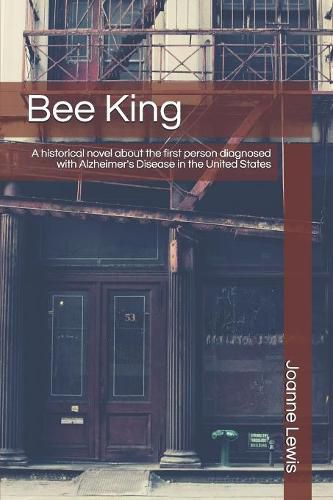Readings Newsletter
Become a Readings Member to make your shopping experience even easier.
Sign in or sign up for free!
You’re not far away from qualifying for FREE standard shipping within Australia
You’ve qualified for FREE standard shipping within Australia
The cart is loading…






Bee King is a historical mystery about the first person diagnosed with Alzheimer’s Disease in the United States. This novel takes place in lower Manhattan from the start of the Civil War until 1910. Just like the people who inhabited Five Points during the 1800s and the turn of the century, Bee King traverses the pentagonal streets where abolitionists battled copperheads, immigrants clashed among social, religious and political strife, and doctors and psychologists strained to help patients. Told in Five Points (sections), Bee King is dramatized through conventional literary devices as well as through newspaper articles, a manifesto, and other non-traditional tools. William Henley and Noble Jennings have been best friends since they were in an orphanage together. As adults, Noble is charged with murder. William, a successful attorney, defends his friend using the novel defense of early on-set dementia. Bee King is a tapestry loosely told through the framework of Noble’s trial and from kaleidoscopic points of view.
The novel weaves together an ensemble of real and fictional characters that include Dr. Alois Alzheimer; Dr. Levi Solomon Fuller, the first black American psychiatrist; Peggy Fuller, a journalist who publishes her crime reporting under a male pseudonym; Sarah, a mulatto woman who cares for her brain damaged mother; Tammany Hall racists; Jenny Big Stink, a drug dealing fish peddler; Lonny Massacre, a serial killer; and more. Their struggles and successes intertwine to tell Noble’s story, as well as their own.
As vivid as the characters are in Bee King, lower Manhattan and the cultural and social history of five decades stand as three-dimensional characters on their own. Abraham Lincoln fights to end slavery. Immigrants volley to make livings in the narrow and crowded thoroughfares. Doctors must help patients without proper tools. Psychological breakthroughs have not yet arrived. The streets are alive, and they are glorious and dangerous.
$9.00 standard shipping within Australia
FREE standard shipping within Australia for orders over $100.00
Express & International shipping calculated at checkout
Bee King is a historical mystery about the first person diagnosed with Alzheimer’s Disease in the United States. This novel takes place in lower Manhattan from the start of the Civil War until 1910. Just like the people who inhabited Five Points during the 1800s and the turn of the century, Bee King traverses the pentagonal streets where abolitionists battled copperheads, immigrants clashed among social, religious and political strife, and doctors and psychologists strained to help patients. Told in Five Points (sections), Bee King is dramatized through conventional literary devices as well as through newspaper articles, a manifesto, and other non-traditional tools. William Henley and Noble Jennings have been best friends since they were in an orphanage together. As adults, Noble is charged with murder. William, a successful attorney, defends his friend using the novel defense of early on-set dementia. Bee King is a tapestry loosely told through the framework of Noble’s trial and from kaleidoscopic points of view.
The novel weaves together an ensemble of real and fictional characters that include Dr. Alois Alzheimer; Dr. Levi Solomon Fuller, the first black American psychiatrist; Peggy Fuller, a journalist who publishes her crime reporting under a male pseudonym; Sarah, a mulatto woman who cares for her brain damaged mother; Tammany Hall racists; Jenny Big Stink, a drug dealing fish peddler; Lonny Massacre, a serial killer; and more. Their struggles and successes intertwine to tell Noble’s story, as well as their own.
As vivid as the characters are in Bee King, lower Manhattan and the cultural and social history of five decades stand as three-dimensional characters on their own. Abraham Lincoln fights to end slavery. Immigrants volley to make livings in the narrow and crowded thoroughfares. Doctors must help patients without proper tools. Psychological breakthroughs have not yet arrived. The streets are alive, and they are glorious and dangerous.